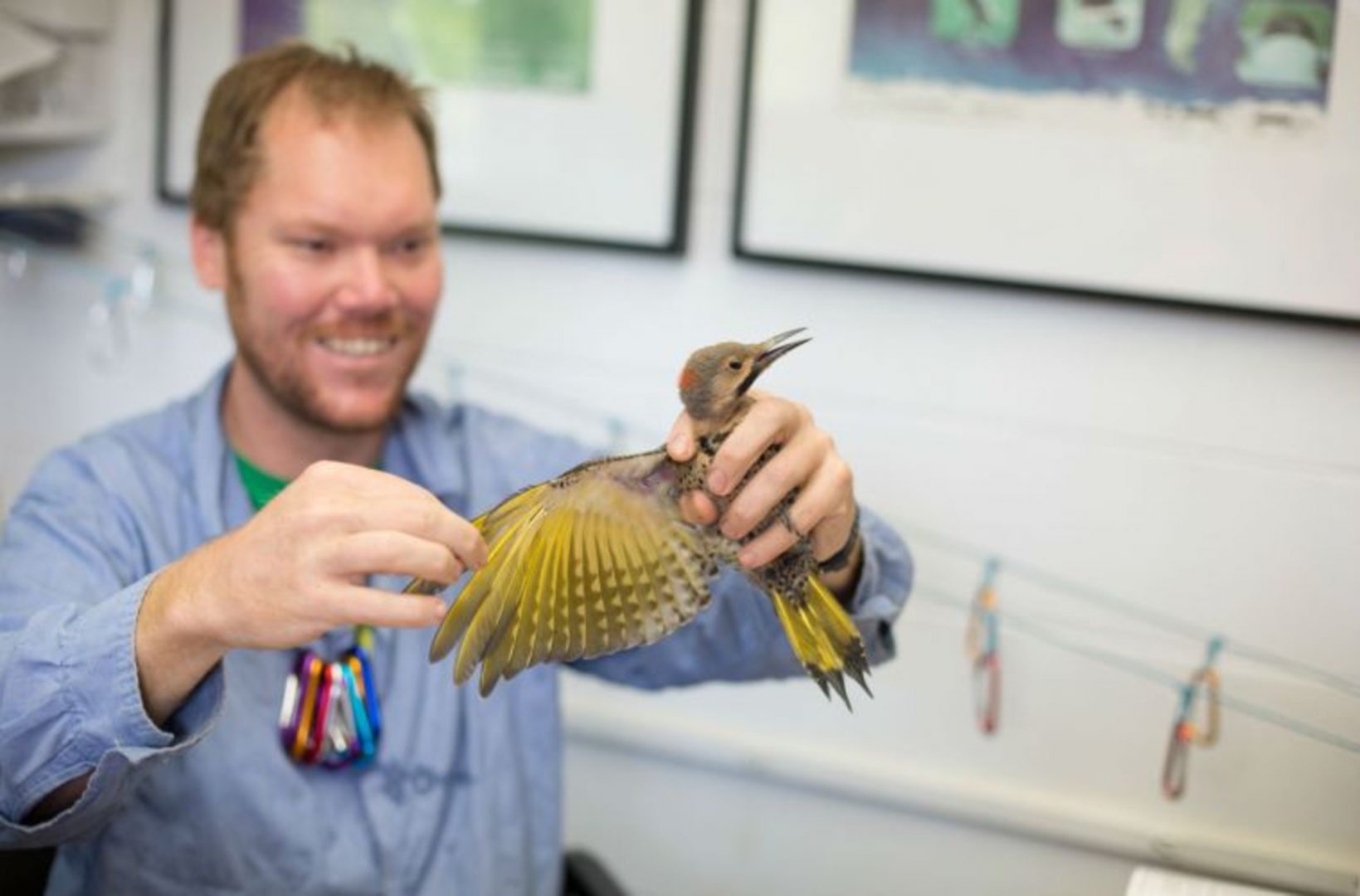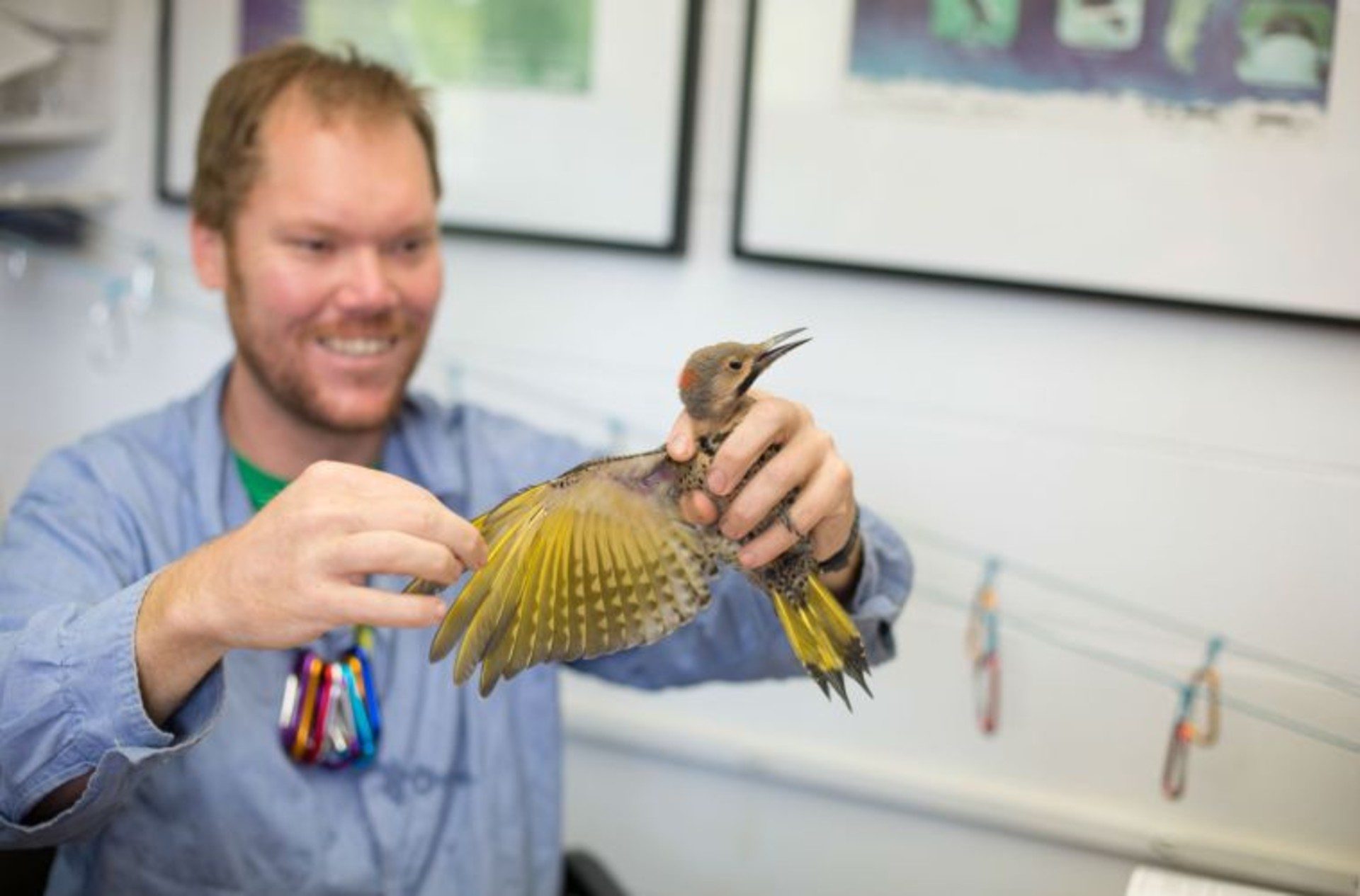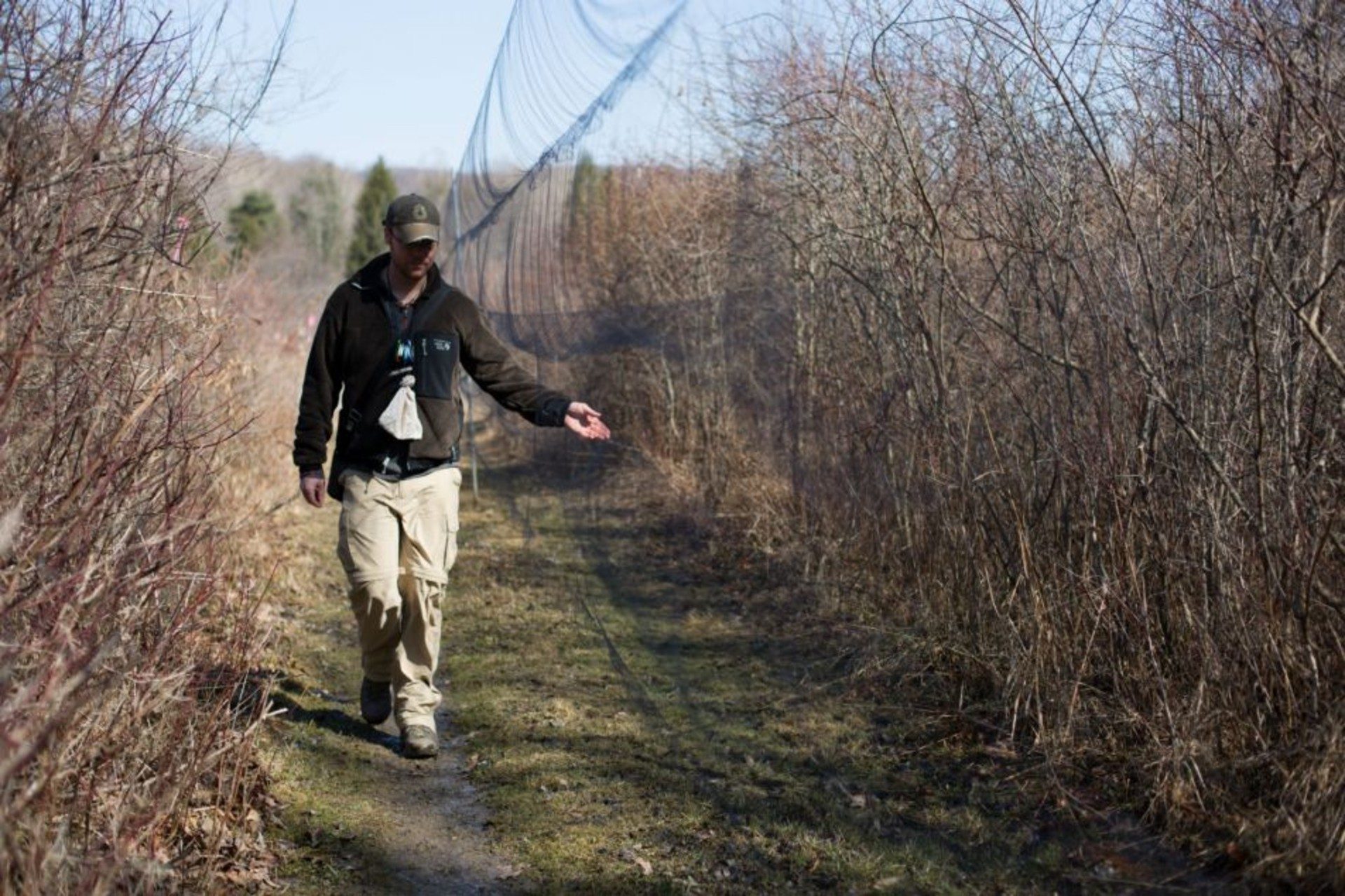
Luke DeGroote holds a Northern Flicker in 2017. Bird banding is currently on hold during the shutdown.
Powerdermill Nature Reserve


Luke DeGroote holds a Northern Flicker in 2017. Bird banding is currently on hold during the shutdown.
Powerdermill Nature Reserve

Powerdermill Nature Reserve
Luke DeGroote holds a Northern Flicker in 2017. Bird banding is currently on hold during the shutdown.

Powerdermill Nature Reserve
Luke DeGroote holds a Northern Flicker in 2017. Bird banding is currently on hold during the shutdown.
Many sectors of the economy have either been halted or thoroughly changed by the response to the coronavirus pandemic, and environmental research and conservation are no exceptions.
“It’s important to conserve the environment, and collect data that would help us do that,” said Luke DeGroote, Avian Research Coordinator at Powdermill Nature Reserve. “But at the same time, it’s more important right now to stop the spread of disease, and so we have to put [research] on hold. But that can be a hard thing to accept.”
Typically this time of year is a busy one, as DeGroote and staff catch migratory birds in nets and place tiny bands on their legs to track and learn more about them. That’s not possible now, as staff and volunteers would have to work too closely while handling the birds to follow physical distancing guidelines and remain safe.
Listen to the story:
They’ve been banding birds at Powdermill in the Laurel Highlands each spring since 1961, except since the middle of March when Pennsylvanians were encouraged, then ordered to stay at home.
“The whole spring season is basically lost,” DeGroote said.
In the long term, however, missing just one season won’t make a huge difference in the value of a dataset that’s been collected over more than 50 years, said DeGroote. They won’t have volunteers this summer, but DeGroote hopes that eventually a seasonal employee living at the site can work with their banding manager as a pair, following safety guidelines from the North American Banding Council, which DeGroote himself helped draft.
More pressing is a grant-funded Motus project to install tracking stations for birds and other wildlife, like Monarch butterflies, fitted with tiny radio transmitters. The project team had to postpone installation in Pennsylvania, and reevaluate traveling to Maryland and New York. Degroote said this pushes back critical research into research of declining species, like rusty blackbirds and northern long-eared bats. One upside is that installation of these stations can be done with just one or two people, in fairly remote areas.
This tension between doing the work and staying safe is something Jeffrey Wagner, and his staff are struggling with at the Pennsylvania Natural Heritage Program. Wagner is director of the partnership between the Western Pennsylvania Conservancy and state and federal agencies which gathers information about important plant and animal species across the state. Wagner said it’s a risk sending researchers far out into the field where they could be hurt, or their car could break down, making all of the physical distancing counterproductive.
“There are going to be big parts of the state that we’re not even going to consider going to,” Wagner said. “We’re not going to go to Potter County because it’s too long a drive to go there and go back in one day.”
They’ve canceled early spring wildflower and bird research for this year, and Wagner said they’re planning one fiscal quarter at a time. When it’s possible, staff will try to get to projects they can do alone, closer to where they live in Pittsburgh or Harrisburg. But not having boots on the ground in some areas of the state where data is collected on Pennsylvania’s rare species and habitats will have an impact on their database of nearly 25,000 records.

Powdermill Nature Reserve
Luke Degroote checking nets in 2017. Bird banding has stopped during the shutdown.
“A season lost is one year of data that we can’t update, or in some cases, new data to collect to put in the database,” Wagner said. “So it just kind of compounds the issue of keeping data current.”
He said the more current the data are, the more useful they are. The database is consulted in environmental reviews for any type of project that requires a permit from the state’s Department of Environmental Protection, from gas pipelines to shopping malls. Wagner said while the program already relies on remote data, like aerial photography, there’s no substitute for field work.
Something else that has to be done in person is planting trees. Tree Pittsburgh planned on putting thousands in the ground this spring, from corporate-sponsored events to tree giveaways.
“I think the biggest disappointment for our team are the school plantings that we had planned. The whole point of the program is for the children to have the experience of planting a tree,” said Danielle Crumrine, Tree Pittsburgh’s executive director. “So it doesn’t make sense for us to go plant the trees. A lot of those will be postponed to the fall, for sure.
She said right now many of those trees are being cared for by staff in their Lawrenceville nursery, which is open for staff to work because nurseries are classified as essential businesses under Pennsylvania’s coronavirus response plan. They’re following a strict distancing and disinfecting protocol there, and working out delivery and pickup models for the public to get trees safely.
But the pandemic is going to hit Tree Pittsburgh’s budget hard, Crumrine said. They’ve had to cancel fundraisers, corporate sponsored events, and facility rentals. They weren’t able to bring back two seasonal workers, and Crumrine said she’s looking at salary cuts to avoid layoffs.
“Just when we were ready to start really scaling up and I mean going from planting 3,000 to 4,000 trees a year, to let’s plant 10,000 trees a year, as part of the mayor’s big tree planting initiative to plant 100,000 trees — I think that’s going to be a big, big challenge to scale in the way that we wanted to,” she said.
This comes at a time when Pittsburgh’s tree canopy is shrinking. Crumrine said their work is part of a bigger picture, too, as Pennsylvania and the country weigh opening back up for business.
“When you think about the amount of funding that all of the environmental groups have leveraged for capital projects in this region, for environmental restoration projects, and not to mention the amount of people that we employ, as leaders within this sector like myself, we need to stress the importance of the environmental organizations continuing and thriving as major contributors to the economic recovery,” she said.
Until then, Tree Pittsburgh and others are planning for an uncertain future, as they look to fill funding gaps, negotiate grant deadlines, and catch up on paperwork that sometimes falls behind in a busy season that is normally spent outdoors.
StateImpact Pennsylvania is a collaboration among WITF, WHYY, and the Allegheny Front. Reporters Reid Frazier, Rachel McDevitt and Susan Phillips cover the commonwealth’s energy economy. Read their reports on this site, and hear them on public radio stations across Pennsylvania.
(listed by story count)
StateImpact Pennsylvania is a collaboration among WITF, WHYY, and the Allegheny Front. Reporters Reid Frazier, Rachel McDevitt and Susan Phillips cover the commonwealth’s energy economy. Read their reports on this site, and hear them on public radio stations across Pennsylvania.
Climate Solutions, a collaboration of news organizations, educational institutions and a theater company, uses engagement, education and storytelling to help central Pennsylvanians toward climate change literacy, resilience and adaptation. Our work will amplify how people are finding solutions to the challenges presented by a warming world.